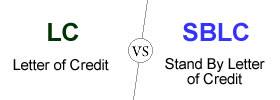Difference between LG Optimus G and LG Optimus F7
Key difference: The LG Optimus G features a 4.7 inch screen and runs on Android 4.0 (Ice Cream Sandwich). In terms of hardware, it has a Qualcomm Snapdragon S4 Pro APQ8064, 1.5 GHz quad-core Qualcomm Krait with 2 GB RAM. The LG Optimus F7, on the other hand, features a 4.7 inch screen and will run on Android 4.1.2 (Jelly Bean). In terms of hardware, it will have a 1.5 GHz dual-core processor, 2 GB RAM and an internal storage capacity of 8 GB.
 With the constant upgrade in technology these days, new models of smartphones as well as upgraded models of smartphones with new features are being constantly launched in the market. Smartphones have become a way of life for many people, allowing them to do anything and everything on the go. This includes typing up a document, chatting with friends, video conferencing, writing up reports, checking e-mails, etc.
With the constant upgrade in technology these days, new models of smartphones as well as upgraded models of smartphones with new features are being constantly launched in the market. Smartphones have become a way of life for many people, allowing them to do anything and everything on the go. This includes typing up a document, chatting with friends, video conferencing, writing up reports, checking e-mails, etc.
One of the most popular operating systems for smartphones and tablets is Android. Android is a Linux-based operating system owned and operated by the Open Handset Alliance, a consortium of 84 leading firms, which includes mobile handset makers, application developers, some mobile carriers and chip makers. The consortium is lead in part by Google, as well as HTC, Sony, Dell, Intel, Motorola, Qualcomm, Texas Instruments, Samsung Electronics, LG Electronics, T-Mobile, Sprint Nextel, Nvidia, and Wind River Systems.
A number of these companies’ smartphones and tablets run on Android. Android is an open source software, which means that the code is freely available for modification and distribution by device manufacturers, wireless carriers and enthusiast developers. One of these companies is LG Electronics. LG Electronics is a business of LG Corporation. LG Corporation is the fourth-largest conglomerate in South Korea.
 A popular series of smartphones by LG Electronics is the LG Optimus. Some of the newer phones under this brand include LG Optimus G, LG Optimus L5, LG Optimus L7, etc. On, February 21, 2013, LG announced the new sub category in the LG Optimus lineup, the F series, namely LG Optimus F5 and LG Optimus F7.
A popular series of smartphones by LG Electronics is the LG Optimus. Some of the newer phones under this brand include LG Optimus G, LG Optimus L5, LG Optimus L7, etc. On, February 21, 2013, LG announced the new sub category in the LG Optimus lineup, the F series, namely LG Optimus F5 and LG Optimus F7.
The LG Optimus G features a 4.7 inch screen and runs on Android 4.0 (Ice Cream Sandwich). In terms of hardware, it has a Qualcomm Snapdragon S4 Pro APQ8064, 1.5 GHz quad-core Qualcomm Krait with 2 GB RAM. It has a 13 MP or an 8MP primary camera, which is dependent on the market. It has a 1.3 MP secondary front camera. It is available with a storage capacity of 32 GB. It will have 4G and NFC capabilities.
The LG Optimus F7, on the other hand, features a 4.7 inch screen and will run on Android 4.1.2 (Jelly Bean). In terms of hardware, it will have a 1.5 GHz dual-core processor, 2 GB RAM and an internal storage capacity of 8 GB. The phone will have a 8 MP primary camera and a 1.3 Mp front facing secondary camera. It will have 4G and NFC capabilities.
The information for the detailed table about the two phones has been taken from the LG website and GSMArena.com.
|
|
LG Optimus G |
LG Optimus F7 |
|
Launch Date |
November 2012 |
Announced February 2013 Expected release Q2/2013 |
|
Company |
LG Electronics |
LG Electronics |
|
Size |
131.9 x 68.9 x 8.5 mm (5.19 x 2.71 x 0.33 in) |
131.7 x 68.2 x 9.6 mm (5.19 x 2.69 x 0.38 in) |
|
Display |
True HD-IPS + LCD capacitive touchscreen, 16M colors |
True HD-IPS LCD capacitive touchscreen, 16M colors |
|
Screen |
768 x 1280 pixels, 4.7 inches (~318 ppi pixel density) |
720 x 1280 pixels, 4.7 inches (~312 ppi pixel density) |
|
Protection |
Corning Gorilla Glass |
TBA |
|
Weight |
145g (5.11 oz) |
TBA |
|
2G Network |
GSM 850 / 900 / 1800 / 1900 |
GSM 850 / 900 / 1800 / 1900 |
|
3G Network |
HSDPA 900 / 2100 |
HSDPA 900 / 1900 / 2100 |
|
4G Network |
LTE Cat. 3 CSFB 700/1700 |
LTE |
|
GUI |
LG Optimus UI v3.0 |
TBA |
|
CPU speed |
Quad-core 1.5 GHz Krait |
Dual-core 1.5 GHz |
|
GPU |
Adreno 320 |
TBA |
|
OS |
Android OS, v4.0.4 (Ice Cream Sandwich), upgradable to v4.1.2 (Jelly Bean) |
Android OS, v4.1.2 (Jelly Bean) |
|
Chipset |
Qualcomm MDM9615/APQ8064 |
TBA |
|
RAM |
2 GB RAM |
2 GB RAM |
|
SIM Size |
Micro-SIM |
Micro-SIM |
|
Internal Memory |
32 GB |
8 GB |
|
Expandable Memory |
None |
up to 32 GB |
|
Sensors |
Accelerometer, gyro, proximity, compass |
Accelerometer, proximity, compass |
|
Connectivity |
|
|
|
Data |
WiFi, NFC, GPRS, EDGE, LTE, USB |
WiFi, NFC, GPRS, EDGE, LTE, USB |
|
Speed |
HSDPA, HSUPA, LTE |
HSDPA, HSUPA, LTE |
|
WLAN |
Wi-Fi 802.11 a/b/g/n, dual-band, Wi-Fi Direct, DLNA, Wi-Fi hotspot |
Wi-Fi 802.11 a/b/g/n, Wi-Fi Direct, Wi-Fi hotspot, DLNA |
|
Bluetooth |
Bluetooth v4.0 with A2DP |
Yes |
|
USB |
microUSB v2.0 (MHL), USB Host |
microUSB v2.0 |
|
Primary Camera |
13 MP/8 MP (market dependent), autofocus, LED flash (depending on the market) |
8 MP, 3264 x 2448 pixels, autofocus |
|
Secondary Camera |
1.3 MP |
1.3 MP |
|
Video |
1080p@30fps, LED video light |
Yes (details TBA) |
|
Camera Features |
Geo-tagging, face detection, image stabilization |
Geo-tagging |
|
Sound Enhancement |
Dolby mobile sound enhancement SNS applications Active noise cancellation with dedicated mic |
SNS integration Active noise cancellation with dedicated mic |
|
Audio supported formats |
MP3/WMA/WAV/FLAC/eAAC+/AC3 player |
MP3/WAV/WMA/eAAC+ player |
|
Video supported formats |
MP4/H.264/H.263/WMV/DviX player |
DivX/Xvid/MP4/H.264/H.263/WMV player |
|
Battery Capacity |
Non-removable Li-Po 2100 mAh battery |
Li-Ion 2540 mAh battery |
|
Available Colors |
Black |
Black, White |
|
Messaging |
SMS(threaded view), MMS, Email, Push Mail, IM, RSS |
SMS (threaded view), MMS, Email, Push Email, IM |
|
Browser |
HTML5, Adobe Flash |
HTML |
|
Radio |
Stereo FM radio with RDS |
TBA |
|
GPS |
with A-GPS support and GLONASS |
with A-GPS support |
|
Java |
Java MIDP emulator |
Java MIDP emulator |
|
Additional Features |
|
|
Image Courtesy: blogcdn.com, unleashthephones.com









Add new comment